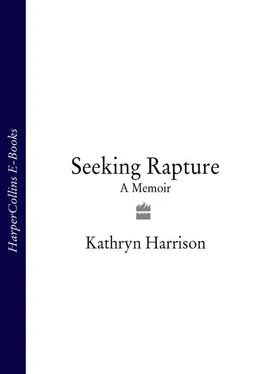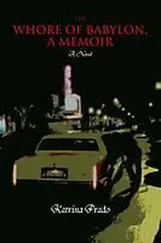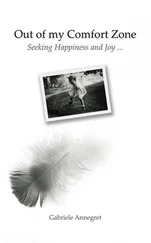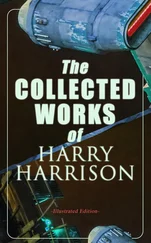A Memoir
KATHRYN HARRISON

WITH THANKS TO SARAH, WALKER, AND JULIA,
without whom this book could not exist
The world will freely offer itself to you to be unmasked, it has no choice, it will roll in ecstasy at your feet.
– Franz Kafka
Cover
Title Page
Dedication
Epigraph
The Children’s Room
Home for the Holidays
Interior Castles I
Seeking Rapture
Interior Castles II
Keeping Time
Tick
Siva’s Daughters
Minor Surgeries
Beach Trip
The Supermarket Detective
A Pilgrimage to Saks Fifth Avenue
Renewal
What Remains
Nitpickers
Labor
Mother’s Day Card
Keep Reading
Acknowledgments
Also by the Author
Copyright
About the Publisher
The children are young enough so that the passage between our two bedrooms is still umbilical, a door through which I travel nightly once or twice, between midnight and dawn, sometimes more often. Summoned by a cry, impelled by a worry or nightmare of my own, I don’t wake fully in the journey from our bed to Walker’s (nine steps) or Sarah’s (fourteen). I kneel beside whichever child I’ve come to comfort, sometimes I let my cheek rest on the foot of the bed and fall back into my dreams. When I rouse myself, minutes or hours later, I am cold, stiff, confused. The night-light, which seems so weak at bedtime that it fails to illuminate the cars and dolls and blocks underfoot, dazzles my just-opened eyes. The entire room is gold and glowing, and I can see each eyelash curled against his cheek, count the pale freckles on her nose.
Boy and girl, they are still young enough to share this large room that adjoins our bedroom, the room that, innocent of children, my husband and I imagined would be a library. After all, it has a whole wall of floor-to-ceiling bookcases. When we moved into this brownstone in Brooklyn, I transferred novels and poems and essays from their boxes (packed as they had been shelved, alphabetically) directly into the empty cases. At last, here was a home with built-in shelves! A fireplace, and furniture inherited from my mother’s mother – antique steamer trunks, mahogany chairs and desk, a chaise longue for more desultory study – contributed to our literary aspirations for the space. Now only the chaise remains. All but the top four shelves are emptied of grown-up books and filled with toys, picture books, art supplies. I have removed novels and essays, poems and histories as I have needed to, in response to our children’s ability to reach and climb. I carried them upstairs and stacked them, ‘A’s and ‘M’s and ‘Z’s all jumbled together and furred with dust. This was the way the room was transformed from library to nursery: book by book, shelf by shelf, chair by chair. I wonder if it is by equally small increments that we become parents, as our children claim another and another sinew of devotion.
Sarah’s arrival was followed by that of her crib. Hundred-spindled, made of fruitwood, it displaced two chairs and the desk. When she woke at two or at four and called me to her, I stumbled from our bed to the crib and reached over its tall side. I took her into my arms and took us both into the chaise, where we ultimately fell asleep together, my nipple still in her mouth.
Long before she stopped nursing, our daughter began acquiring things , many of them. The baby swing and the toy chest nudged the steamer trunks to the living room; a rocking chair replaced the last of its immobile colleagues. Colin and I bought a craft table so small that even carefully folded onto the matching stools we cannot coax our humped knees under its surface, now covered with sedimentary layers of adhesives and pigment. Before Sarah was three, she became enamored of Play-Doh, paste, poster paint, acrylic paint, glitter paint, oil paint, and Magic Markers. In short order, she acquired a glue gun; a glutinous, slippery, shiny gunk called Gak; Silly Putty; plaster of Paris; a machine that employs centrifugal force to splatter paint onto whirling cards; and a little brother – all of which arrivals encouraged the exchange of the pink and mauve Oriental rug for a nearly wall-to-wall Stainmaster in a practical shade of dark blue.
Three years old, the carpet already wears its history. People who do not have children will give other people’s children the sort of gifts their parents never buy, hence the popularity of bachelor uncles and courtesy aunts. Hence the glue gun and Gak. I drew the line at hot paraffin and hid the candle-making kit, but, still, we paint and draw and mold and glue a lot – every day – and the more ambitious art projects do leave incidental impressions, stains, gouges. The rocking chair, I noticed recently, has been decorated with stickers and wobbly stripes of red and green around its arms and along the sides of its seat. It has older scars, of course; this rocker was in my childhood bedroom, and before that in my mother’s. It has been glued and clamped, screwed and reglued by both my grandfather and my husband.
The baby swing and the changing table, the crib and the walker are gone now, and each of the children has what is called a ‘youth’ bed – smaller than a twin and closer to the floor. At five, Sarah is nearly too large for hers, but she’s not ready to part with it. She hated to lose its predecessor, the crib, which we tactfully dismantled long before her brother’s arrival and only after we had put together her new little bed, with its shiny, red enameled frame. We were careful to allow a full six months between the older child’s moving out of the crib and the younger’s moving in, careful that she never felt that she was forced to pass her bed directly along to another baby, but still Sarah wept when its polished wood head and foot and sides were carried from the room.
Walker, for whom a crib was never better than an inadequately disguised cage, clapped at its second dismantling. He bounced on his version of the little bed, the same as his sister’s but enameled in blue.
Between the two little beds is the fireplace, whose flue is permanently shut, bricked up. The empty hearth has become a cubbyhole for an appropriately combustible-looking collection of junked toys: Barbie’s broken refrigerator and her hot-pink range, a fire engine without its wheels, stray blocks, twisted and retwisted pipe cleaners, ravaged coloring books – all trash they cannot bear to discard. Together the objects make a blaze and jumble of color. Presiding disconsolately over the heap is the piñata from the most recent birthday party. A papier-mâché donkey with a festive hide and mane of orange and red and pink tissue paper, he was torn in two, vivisected by preschool greed wielding a broom. Now his head and tail both face out into the bedroom, so we are spared the dispiriting sight of his hollow middle. The mantelpiece above bears another rubble of objects, most of which our daughter hopes to keep out of her brother’s reach: stickers, costume jewelry, a collection of tiny plastic horses.
Propped in the center of the mantel is an old wall hanging: a wood bas-relief of a tavern, including kitchen, dining hall, and bedrooms. Every object and gesture is carved and painted with cunning attention: dinner plates the size of dimes, a butter churn with a three-inch dash, washtubs, rolling pin, crucifix, table and benches, a clock whose hands read a quarter past five, hats hanging on hooks by the door, an accordion, two flowerpots, shotgun, and stove. My grandfather, who was apprenticed in 1904 to a cabinetmaker in Berlin (he was fourteen), acquired the hanging, which was made in the Black Forest. It used to contain a working music box, and just under the eaves is a brass key that no longer turns. The hidden mechanism, with its rolling, metal-toothed platen and minuscule comb of tines, once played, my grandfather told me, a feeble polka.
Читать дальше













